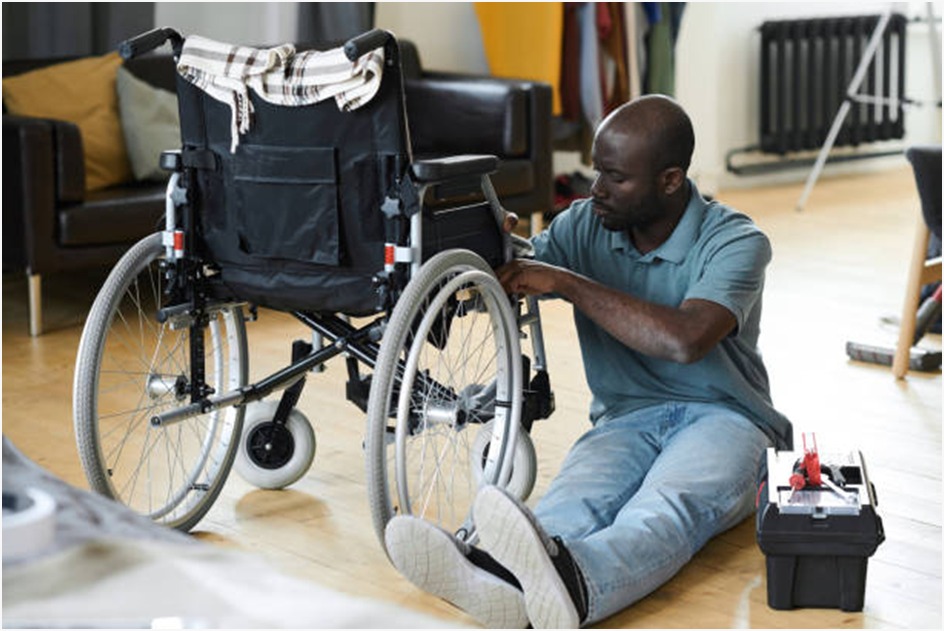Navigating the World on Wheels: A Journey Through Mobility

The world is an expansive landscape of possibilities, but for individuals reliant on wheelchairs in Australia, navigating this landscape can come with unique challenges. From exploring urban streets to venturing into the countryside, mobility is not merely about movement—it’s about accessing life in its fullest spectrum. However, one prominent challenge often faced by those in wheelchairs revolves around the costs associated with ensuring mobility and accessibility.
Wheelchair Costs: Navigating Financial Realities for Enhanced Mobility
For many Australians reliant on wheelchairs, the pursuit of mobility intertwines with the financial considerations of acquiring and maintaining these vital aids. Wheelchair costs constitute a significant aspect of the mobility equation, impacting accessibility, independence, and overall quality of life.
The expenses associated with wheelchairs are multifaceted, encompassing not only the initial purchase but also ongoing maintenance and potential modifications. Wheelchair costs vary widely, contingent on numerous factors such as the type of wheelchair—manual or powered—customizations, and additional features required to suit individual needs.
Accessibility isn’t just a physical consideration; it’s also a financial one. Affordability often becomes a pivotal factor in determining the type and quality of wheelchair an individual can access. For many, navigating these costs presents a considerable challenge, especially when faced with limited financial resources or inadequate insurance coverage.
Addressing the financial aspects of wheelchair costs requires a comprehensive approach. Understanding available funding options and support mechanisms is crucial. Government schemes like the National Disability Insurance Scheme (NDIS) can alleviate some financial burdens by offering assistance or coverage for wheelchair expenses for eligible individuals. Additionally, certain private health insurance plans may provide partial coverage for mobility aids, contributing to managing costs.
Making informed decisions when purchasing a wheelchair is pivotal. It involves careful consideration of personal needs, the wheelchair’s functionalities, durability, and compatibility with potential modifications or accessories. Seeking guidance from healthcare professionals or mobility specialists can assist in selecting the most suitable wheelchair within one’s budget while ensuring optimal comfort and functionality.
However, the financial challenges extend beyond the initial purchase. Ongoing maintenance and repairs constitute additional costs that need to be factored into the overall budget. While some maintenance tasks can be managed independently, seeking community support or online resources for cost-effective solutions can further ease the financial burden associated with wheelchair upkeep.
Ultimately, the financial considerations surrounding wheelchair costs intersect deeply with an individual’s access to enhanced mobility. It’s not merely about the tangible expense but also about the intangible value of independence, inclusivity, and freedom. By exploring available funding avenues, making informed choices, and seeking support within communities, Australians can navigate the financial realities of wheelchair costs more effectively, ensuring improved accessibility and a better quality of life.
Overcoming Financial Barriers
While mobility solutions are abundant, the costs associated with acquiring and maintaining wheelchairs often present a significant hurdle. Wheelchair costs can vary significantly based on factors like type, features, and customizations. Moreover, ongoing maintenance and repairs contribute to the financial burden.
Understanding Funding Options
Australians in need of wheelchairs can explore diverse funding options to alleviate financial strains. Government schemes, such as the National Disability Insurance Scheme (NDIS), can provide financial aid or cover a portion of the costs for eligible individuals. Furthermore, some private health insurance plans might offer coverage for mobility aids.
Making Informed Choices
When it comes to purchasing a wheelchair, the decision-making process can be overwhelming. From considering the terrain you’ll navigate to assessing personal mobility requirements, informed decisions can significantly impact both comfort and functionality. Evaluating features, durability, and compatibility with additional accessories are crucial factors to consider.
Seeking Professional Guidance
Consulting healthcare professionals or mobility specialists can offer invaluable insights into choosing the most suitable wheelchair. These experts can provide guidance on ergonomic design, proper sizing, and additional features that align with specific needs.
Maintenance and Longevity
Investing in a wheelchair is a long-term commitment. Regular maintenance and care are essential to ensure its optimal performance and longevity. However, maintenance costs can also add up over time, further underscoring the importance of factoring these expenses into the overall financial planning.
Conclusion
Navigating the world on wheels in Australia encapsulates both the freedom of movement and the financial challenges associated with ensuring optimal mobility. From understanding funding avenues to making informed choices and advocating for broader accessibility, the journey towards better mobility for wheelchair users demands a multifaceted approach.
The costs of wheelchairs shouldn’t be a barrier preventing individuals from accessing the world. Instead, through a combination of informed decision-making, financial planning, and community support, Australians in wheelchairs can confidently roll forward, embracing the richness of life while navigating the landscapes of mobility.
